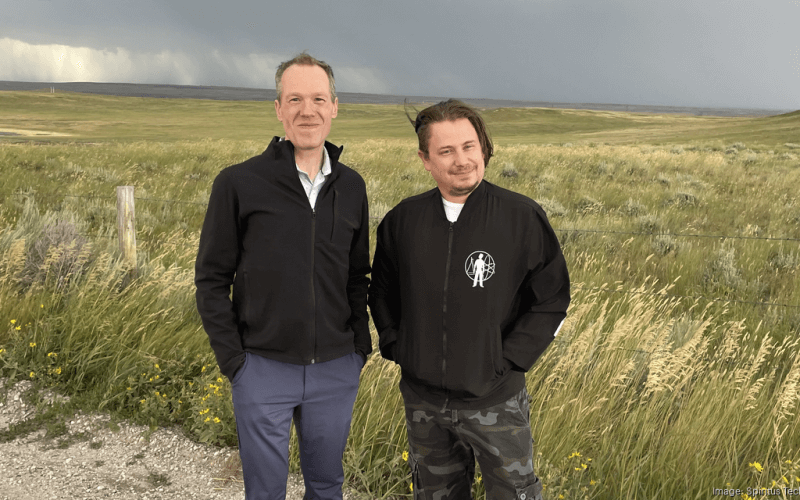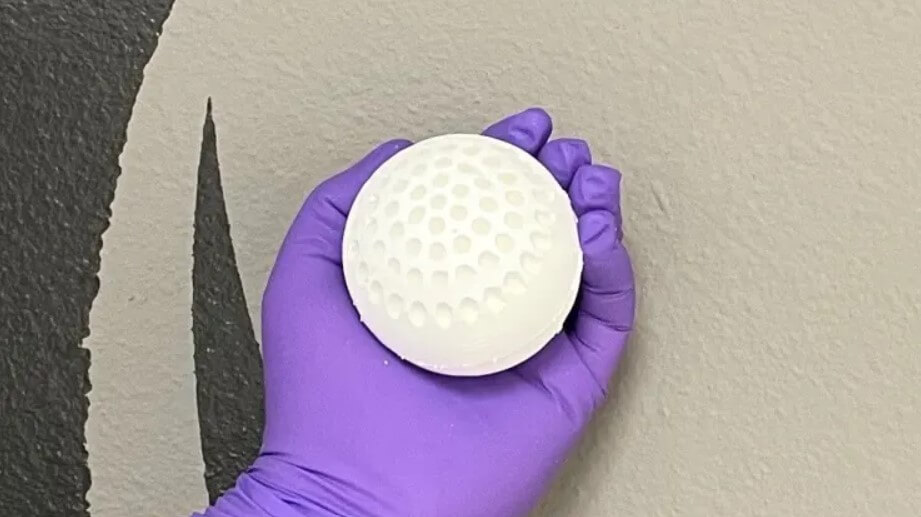
A successful serial entrepreneur and a seasoned chemical engineer with a decade of experience at one of the nation’s premier national labs have come together to develop and scale a new direct air capture technology that mimics the architecture of a human lung.
The founders of the startup, named Spiritus after the Latin word for “breath,” began work in December 2021, and the company is officially coming out of stealth on Wednesday, with the announcement of an $11 million funding raise led by prominent Silicon Valley venture capital firm Khosla Ventures, with other investors including Page One Ventures.
Spiritus has built a novel approach to direct air carbon capture that relies on a material that absorbs carbon dioxide passively. Critically, Spiritus has developed a particular architecture that mimics the alveoli in the lungs in order to maximize the surface area for carbon dioxide to make contact with the material.
This lung-like material, technically called a “sorbent,” will be shaped in round balls and laid out like artificial fruits in a carbon-capture orchard, CEO Charles Cadieu and CTO Matt Lee told CNBC in a phone interview on Tuesday.
When the lung-like “fruit” have been collected from the carbon “orchard,” they will be put in a container, where low heat will be applied to remove the carbon dioxide. The desorption process will be powered by clean energy to ensure the process is a not adding emissions to the atmosphere. Once the CO2 has been removed from the lung-like fruit, the sorbent can then be returned to the carbon orchard and reused.
On Thursday, Frontier, a public benefit company owned by payment processing company Stripe which aims to support the nascent carbon removal industry, said Spiritus is one of 12 companies selected to remove carbon for Stripe, Shopify and the H&M Group.
‘Mother nature’s the true artist’

Lee worked at Los Alamos National Lab from September 2012 to June 2022 on a variety of chemical engineering advanced material projects, including some with national security and defense applications, as well as heat shields and laser fusion fuel target pellets similar to those used at the Lawrence Livermore National Laboratory to achieve a key milestone in nuclear fusion. He is a specialist in colloid science, which is the study of materials where particles of one substance are suspended in another.
Lee hadn’t worked on carbon capture technology applications until Cadieu inspired him to consider the problem. The pair had known each other for about 15 years through a family friend and had enjoyed keeping tabs on each other’s projects.
Previously, Cadieu co-founded Caption Health, a health care startup that uses artificial intelligence to assist in ultrasound scans. Caption Health received funding from the Bill and Melinda Gates Foundation in September 2020 for its capacity to enable non-experts to perform lung ultrasounds and was sold to GE Healthcare in February 2023. Also, Cadieu was a founding team member of IQ Engines, an image recognition software company which Yahoo acquired in 2013.
When Cadieu approached Lee to consider carbon capture, Lee approached the problem with a philosophy he has carried through much of his career: “Mother nature’s the true artist and she’s had a lot more practice than we have had,” Lee told CNBC. The other prong of his philosophy is summarized by a Leonardo da Vinci quote Lee recounted: “Simplicity is the ultimate sophistication.”
That’s why they looked at lungs.
Matt Lee, the chief technical founder, is a chemical engineer with an expertise in colloid science, which is the study of materials where particles of one material are suspended in another.
“Lungs are very well rehearsed at doing this — taking a large volume of air and then dispersing it or spreading it out over an extraordinary high amount of interface that the alveoli make with other parts of the body,” Lee told CNBC. That’s important because while carbon dioxide levels in the atmosphere are at record high levels, carbon dioxide is still diluted and makes up a relatively small percentage of the air.
“In order to capture some significant quantities of carbon dioxide on your sorbent, you simply have to expose it to a lot of air — a massive amount — and so finding the structure that can simultaneously give you that highly efficient contact with a large amount of active surface per unit volume enables you to have a process that is viable, feasible, economical,” Lee told CNBC.
That third component — economical — is critical in the direct air carbon capture field, and is part of what drew Khosla Ventures to make its first direct air capture investment in Spiritus.
“We’ve been watching on the sidelines evaluating all the technologies,” Rajesh Swaminathan, partner at Khosla Ventures, told CNBC in a phone conversation on Tuesday. Direct air capture is still a nascent industry and therefore very expensive right now, but Spiritus uses less energy than most of the other competitors in the space, Swaminathan said.
The absorption of carbon dioxide is passive, and the desorption process, where the carbon dioxide is removed from the “fruit” made with the lung-like material, takes a comparatively low amount of energy, Swaminathan said.
“A lot of direct air capture processes, they require either a lot of high heat — and ours requires low heat — or they require a lot of energy, even if low heat, and ours is less than half of what’s been previously achieved by other solutions,” Cadieu told CNBC. “So this is another part of this overall equation that drives down low costs.”
The U.S. Department of Energy has a public initiative called the “Carbon Negative Shot,” which is its name for the push to drive innovation that can capture carbon dioxide, remove it from the atmosphere and store it for less than $100 per metric ton. Spiritus is driving towards this $100 per metric ton goal.
Spiritus will partner with companies specializing in carbon sequestration to take that removed carbon and put it away.
Cadieu says the artificial carbon orchards that Spiritus plans to build are more efficient than biologic trees and so take a smaller land footprint to absorb carbon dioxide than biologic forests. When the carbon captured with artificial trees is stored, it also has the advantage of sequestering carbon permanently. When biologic trees decompose after they die or burn in a fire, carbon they contain is released back into the atmosphere.
“We’re able to remove about 1,000 times more carbon dioxide than a forest can. And so this solution is actually far more efficient than forestry for removing carbon dioxide from the atmosphere per acre,” Cadieu said.
